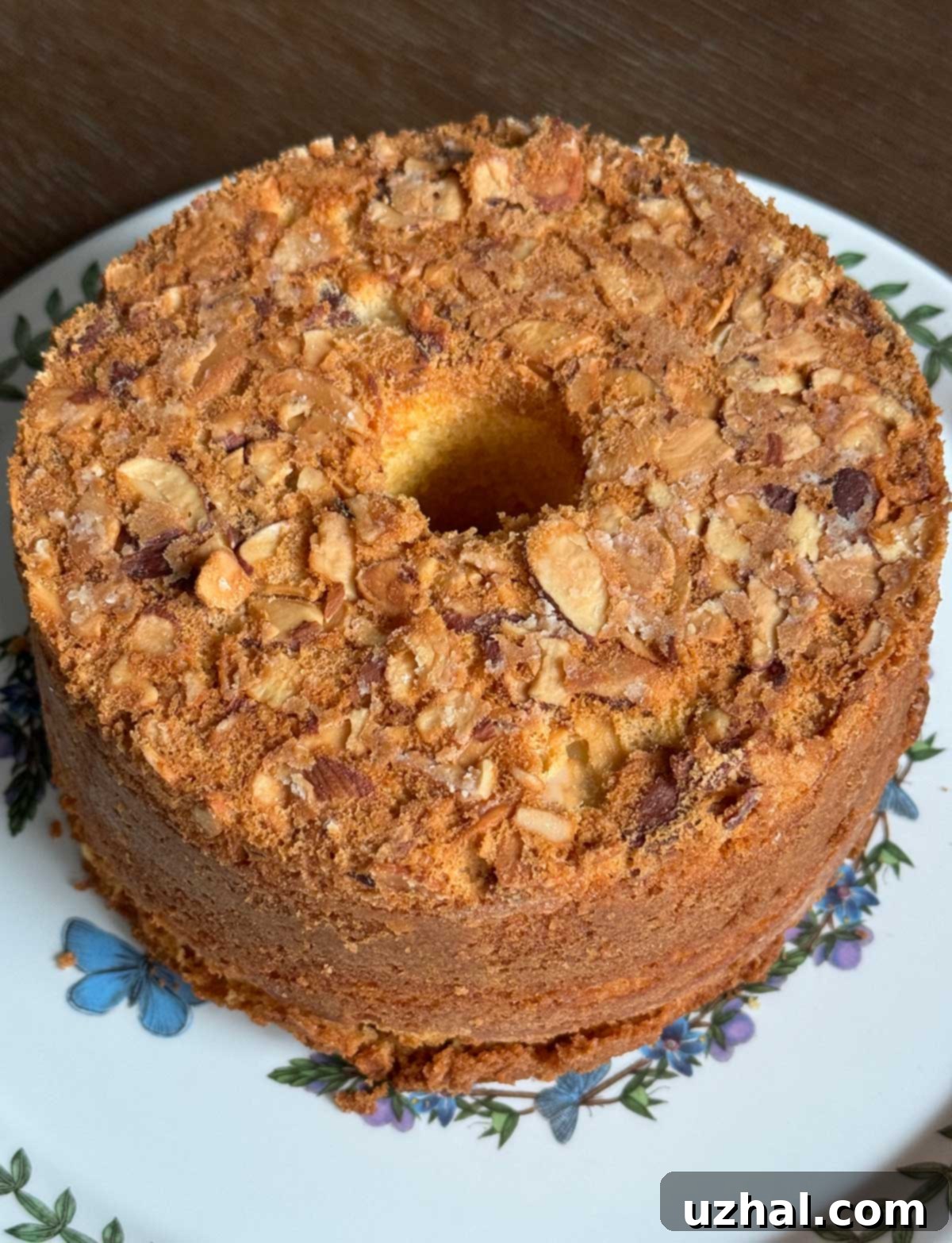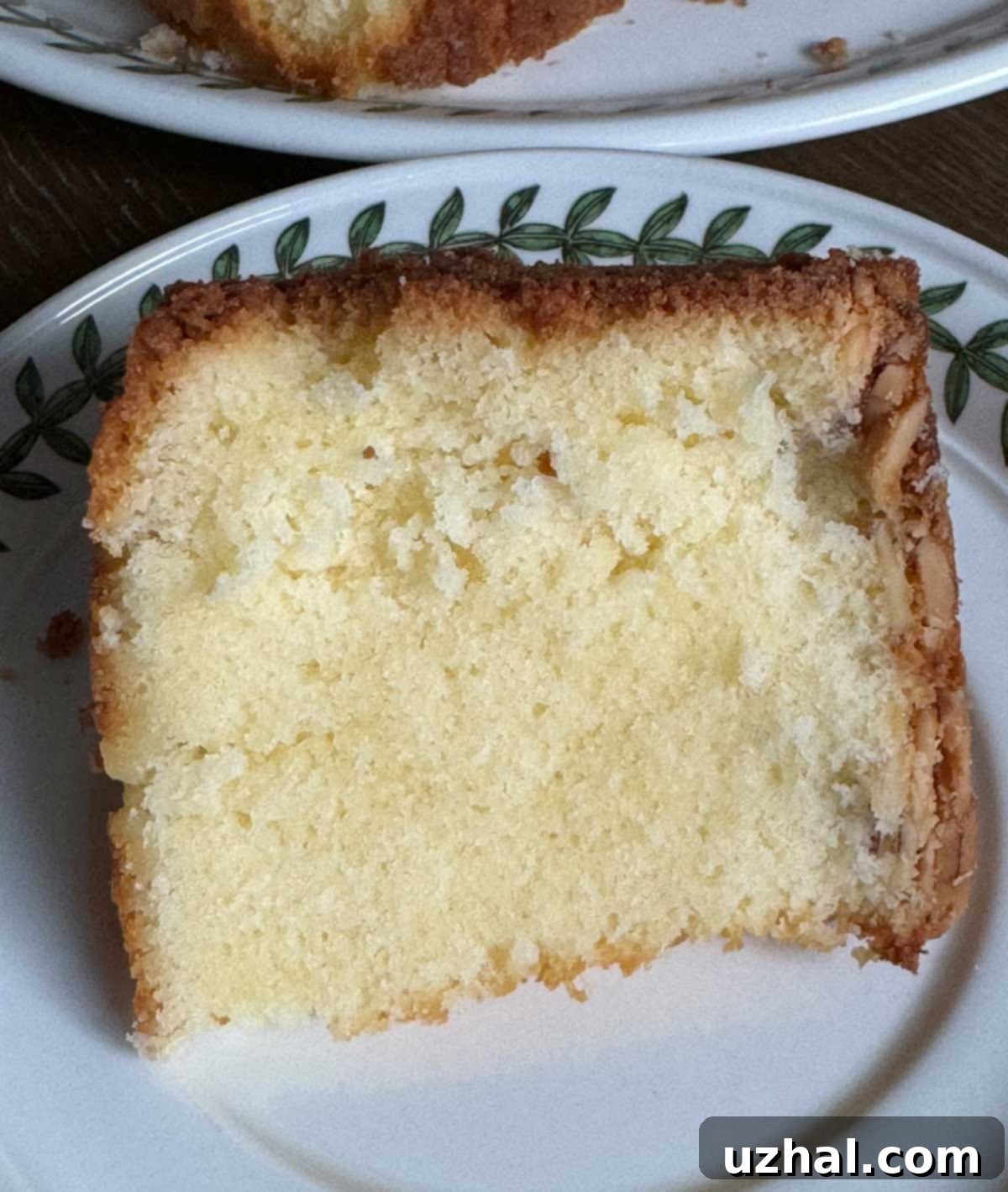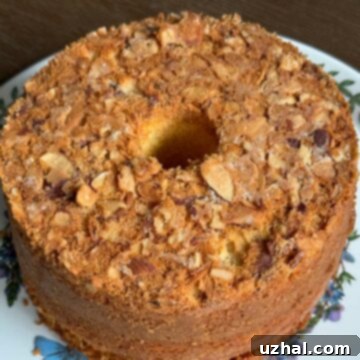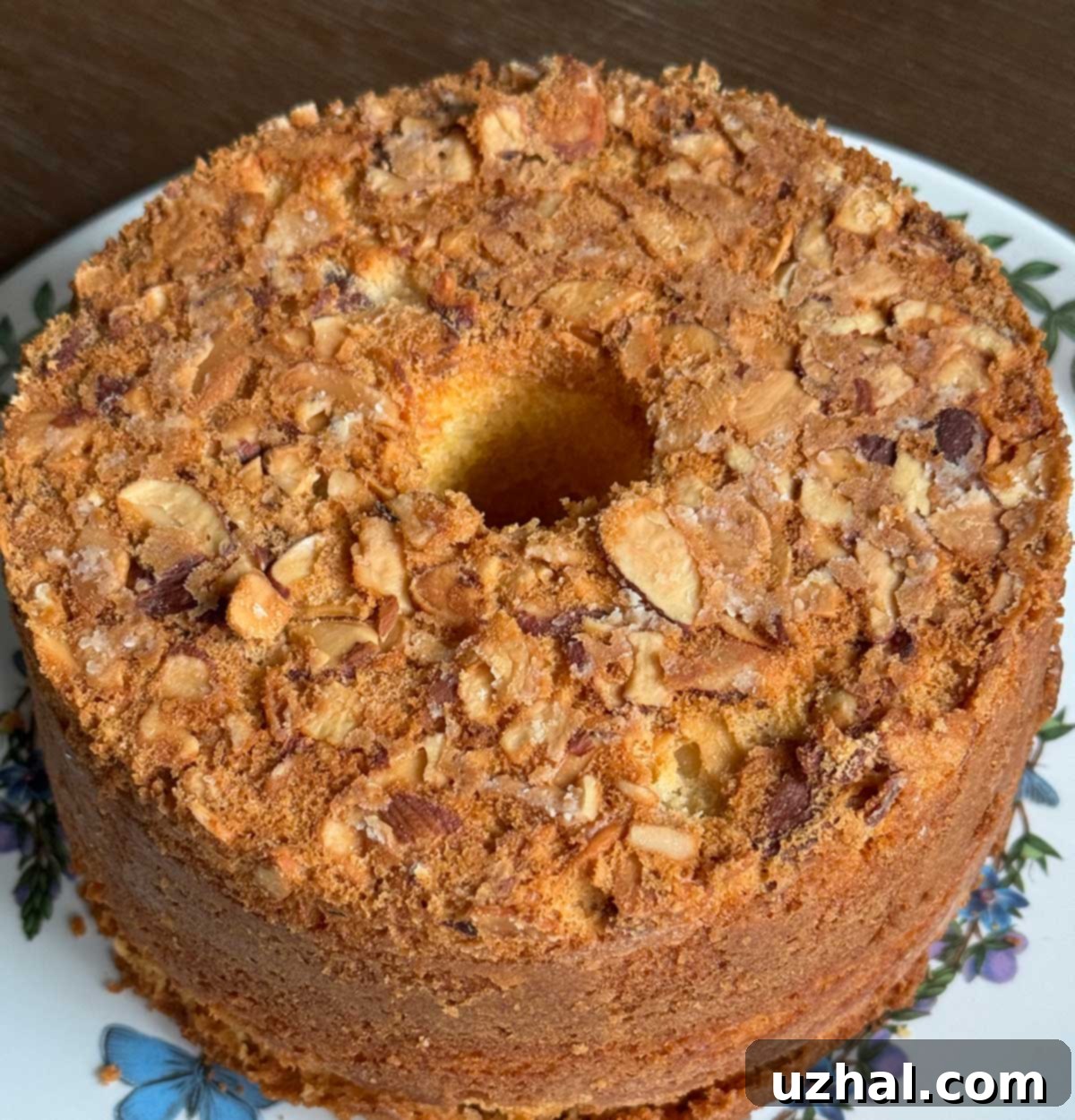Perfectly Soft Cold Oven Almond Pound Cake: Your Guide to a Unique Baking Method
Every baker encounters those moments of creative block, those times when the usual recipes just don’t inspire. I recently found myself in such a baking rut, yearning for something both comforting and novel. That’s when the concept of a cold oven pound cake resurfaced in my mind, promising an intriguing departure from traditional baking methods. This particular almond variation truly came to my rescue, offering a delightful escape from the mundane. Whether it was the enticing almond crust and fragrant extract or simply the allure of an unconventional technique I hadn’t revisited in ages, this recipe proved irresistible. The result? A remarkably tasty and incredibly soft pound cake that exceeded all expectations, complete with a beautifully golden, crumbly crust. This method, often overlooked, delivers a unique texture and flavor profile that makes it a must-try for any home baker.

Unveiling the Mystery: What Exactly is a Cold Oven Pound Cake?
A cold oven pound cake represents a fascinating baking technique where you place your unbaked cake batter directly into a cold oven, then set the temperature and allow the oven to preheat with the cake inside. This might sound counter-intuitive to experienced bakers who meticulously preheat their ovens, but there’s a compelling science behind this method that yields exceptional results, especially for pound cakes. The fundamental theory is that starting the baking process in a cold oven gives leavening agents, particularly baking powder, more time to activate and work their magic. As the oven gradually heats up, the baking powder slowly releases gas bubbles, allowing the cake structure to develop more gently and evenly. This extended, gradual rise contributes significantly to a wonderfully soft and fluffy texture, which is a hallmark of a truly great pound cake.
Beyond the tender crumb, another key benefit of the cold oven method is its impact on the crust. It’s widely believed that the prolonged exposure to circulating moisture within the slowly heating oven interacts uniquely with the starch in the flour. This interaction is thought to help create a thicker, more robust crust compared to cakes baked in a preheated oven. My own experience consistently supports this theory. Every cold oven pound cake I’ve baked has emerged with a distinctive thick, beautifully browned, and delightfully crumbly crust – a textural contrast that perfectly complements the moist interior. This characteristic crust is often a desired attribute in classic pound cakes, adding another layer of sensory enjoyment.
This method not only simplifies the baking process by eliminating the waiting time for preheating but also provides a more controlled environment for the cake to bake, reducing the risk of a domed top or dry edges often seen in cakes exposed to sudden high heat. It’s a technique that encourages patience and rewards you with a uniformly baked, exceptionally moist, and tender cake, proving that sometimes, the slowest path leads to the sweetest destination.

The Secret Sauce: Exploring the Interesting Ingredients
While the cold oven method is a game-changer, the specific ingredients in this almond pound cake recipe also play a crucial role in its superior texture and flavor. Traditional pound cake recipes are celebrated for their simplicity, typically featuring a classic ratio of flour, sugar, butter, and eggs, often enhanced with a splash of vanilla. However, this particular recipe introduces a few intriguing variations that elevate it to another level of softness and richness.
Instead of relying solely on butter, this recipe cleverly incorporates both butter and margarine. A full cup of unsalted butter forms the flavor foundation, providing that rich, creamy depth synonymous with pound cake. Butter contributes significantly to the cake’s aroma and overall indulgence. But for an exceptionally soft crumb, half a cup of soft margarine is added. This combination is intentional; while butter excels in flavor, certain margarines or fat spreads can enhance the cake’s tenderness and moisture retention. I’ve encountered other successful pound cake variations that use a half cup of oil or even shortening in place of margarine, all with the same goal: to modify the texture for maximum softness without compromising flavor. The fat content and composition of these alternatives can influence the final crumb, making the cake lighter and more delicate.
Another delightful deviation from the norm in this recipe is the choice of flavoring. While vanilla extract is the go-to for many pound cakes, here, almond extract takes center stage. This simple swap imparts a wonderfully fragrant and subtly nutty flavor that perfectly complements the almond crust. The almond extract adds an elegant dimension, making the cake feel more sophisticated and special. Of course, if almond isn’t your preference, high-quality vanilla extract would still yield a delicious cake, but I highly recommend trying the almond for a truly unique experience.
Margarine’s Comeback: Dispelling Myths and Choosing Wisely for Pound Cake
Margarine has certainly faced its share of criticism in recent years, and in many cases, this negative reputation is well-deserved. Some brands of margarine are indeed notorious for their poor taste and high water content, making them unsuitable for baking where precise fat-to-water ratios are critical for texture and structure. However, it’s a mistake to dismiss all margarines, as the quality and composition of these spreads have evolved significantly. The key lies in understanding that not all margarines are created equal, and selecting the right type can actually be beneficial in certain baking applications, particularly when aiming for specific textural results.
For this almond pound cake, my goal was an exceptionally soft texture, and I found success with a newer spread called Olivio. I want to emphasize that this is not a sponsored endorsement; it’s simply a product I tried and genuinely liked for its taste and incredibly soft consistency. The unique texture of Olivio seemed to contribute beautifully to the desired crumb of the cake. When choosing a margarine or spread for baking, especially for a pound cake, look for brands that have a higher fat content and a smooth, soft consistency. Typically, spreads with around 90 to 100 calories per tablespoon tend to have the right balance of fat for successful baking. These higher-fat margarines are less likely to introduce excess water into your batter, which can negatively impact the cake’s structure and rise. If Olivio isn’t available in your area, excellent alternatives include Country Crock, Earth Balance, or any other quality spread that meets the calorie and fat content criteria. Both stick and tub forms can work, but soft, spreadable varieties are often preferred for their ease of creaming with butter and sugar, ensuring a smooth, emulsified batter that contributes to a consistent and tender final product.
Ultimately, while butter provides unparalleled flavor, a carefully selected margarine can be a valuable ally in your quest for the softest, most tender pound cake crumb. Don’t let past experiences with low-quality margarines deter you from exploring their potential in specific recipes like this one, where texture is paramount.

The Flour Factor: Why Soft Wheat Makes a Difference in Pound Cake
The type of flour you choose is a fundamental ingredient that significantly impacts the final texture of your pound cake. For this particular recipe, in addition to the unique fat combination, I opted for White Lily flour. White Lily is a renowned Southern flour, distinguished by its very soft wheat composition. This low-protein flour is highly prized in Southern baking for producing incredibly tender and delicate baked goods, making it an ideal choice for a soft pound cake.
However, if White Lily is not readily available in your region, there’s no need to worry. Most standard all-purpose flours, especially those with a slightly lower protein content (around 10-11%), should still yield a delightfully soft pound cake. The key is understanding the role of protein in flour. Higher protein flours (like bread flour) develop more gluten when mixed, resulting in a chewier texture, which is great for bread but less desirable for a tender cake. Lower protein flours, on the other hand, produce less gluten, leading to a more crumbly and soft result.
When it comes to bleached versus unbleached flour, either can work perfectly well. Unbleached flour is simply flour that hasn’t undergone the chemical bleaching process, retaining a slightly off-white color and a subtly stronger flavor. Bleached flour, conversely, is treated to whiten it and weaken its protein structure. I specifically used bleached flour for this recipe because it tends to lend itself to an even softer, finer crumb, which was precisely the texture I was aiming for in this pound cake. The subtle differences between the two are often negligible in home baking, but for maximum softness, bleached flour can offer a slight edge.
Perhaps the most critical tip regarding flour, and indeed all dry ingredients, is the importance of weighing them if you have a kitchen scale. Measuring flour by volume (cups) can be notoriously inaccurate due to variations in how it’s scooped or sifted. A cup of flour can vary by as much as 20-30% in weight depending on how it’s handled. For this recipe, I used approximately 380 grams of flour, which translates to about 3 lightly spooned or sifted cups. Weighing your flour ensures consistent results every single time, removing the guesswork and guaranteeing the perfect balance of ingredients for a consistently soft and delicious pound cake. This attention to detail in ingredient selection and measurement is what truly elevates a good pound cake to a spectacular one.
- Best Chocolate Cream Pie Yet
- Caramel Filled Brownies
- Pineapple Pound Cake with Mexican Vanilla
- Blackberry Cream Cheese Scones
- Molasses Cookies With Baked On Frosting
Recipe: Cold Oven Almond Pound Cake

Cold Oven Almond Pound Cake
Anna
Pin Recipe
Ingredients
- ½ cup sliced almonds
- 16 tablespoons unsalted butter, softened (228 grams)
- ½ cup soft margarine, such as Olivio (114 grams)
- 3 cups granulated sugar (600 grams)
- 5 large eggs room temperature
- 2 teaspoons almond or vanilla extract
- 3 cups soft bleached flour (380 grams)
- 1 teaspoon baking powder
- ½ teaspoon salt
- ½ cup whole milk, room temperature
Instructions
-
Generously grease and flour a 10-inch tube pan, ensuring all crevices are coated to prevent sticking. Evenly sprinkle the sliced almonds over the bottom of the prepared pan.
-
In the bowl of a stand mixer fitted with the paddle attachment, cream together the softened unsalted butter, soft margarine, and granulated sugar. Beat on medium speed for about 5 minutes until the mixture is light, fluffy, and pale in color. This step incorporates air, which is vital for a tender cake.
-
Crack the large eggs into a separate small bowl and whisk them lightly to combine. With the mixer running on medium speed, gradually drizzle the whisked eggs into the butter-sugar mixture, adding them slowly to prevent curdling. Once incorporated, beat in the almond or vanilla extract until well combined.
-
Reduce the mixer speed to its lowest setting. Add the flour and whole milk alternately to the batter, beginning and ending with flour. Start by adding about a third of the flour, mix briefly, then add half of the milk, mix, then another third of the flour, the remaining milk, and finally the last third of the flour. Stop the mixer frequently to scrape down the sides and bottom of the bowl with a spatula, ensuring all ingredients are fully incorporated without overmixing. Overmixing can lead to a tough cake.
-
Carefully scrape the prepared cake batter into the greased and floured tube pan. Gently smooth the top with a spatula to ensure an even surface.
-
Place the cake pan into a cold oven. Close the oven door, then set the oven temperature to 350 degrees F (175 degrees C). Do NOT preheat the oven beforehand.
-
Bake for approximately 90 minutes. It’s advisable to check for doneness after about 70 minutes, as oven temperatures can vary. If your oven tends to run hot, it might bake faster. In my experience, this recipe consistently took the full 90 minutes to achieve perfection.
-
Determining when the pound cake is done is fairly straightforward. The outside will be a rich golden brown and have a distinctly crusty appearance. The cake will also become wonderfully fragrant, filling your kitchen with its sweet aroma. To be absolutely certain, insert a metal skewer or a meat thermometer into the center of the cake; it should come out clean, and the internal temperature should register over 205 degrees F (96 degrees C).
-
Once baked, remove the cake from the oven. Immediately run a thin, sharp knife between the cake and the sides of the pan to loosen it. Allow the cake to cool in the tube pan for about 10 to 15 minutes. This brief cooling period helps the cake firm up slightly, making it easier to handle. Then, carefully invert the cake onto a wire rack, allowing the delightful almond crust to now be on top. Let it cool completely before slicing and serving for the best texture and flavor.
Tried this recipe?Let us know how it was!
